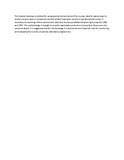Predicting rural household poverty - methodological issues and the PRSP process in Kenya.
| dc.contributor.author | Mwabu, G | |
| dc.contributor.author | Kimenyi, MS | |
| dc.contributor.author | Kimalu, PK | |
| dc.contributor.author | Nafula, N | |
| dc.contributor.author | Manda, DK | |
| dc.date.accessioned | 2015-07-23T13:02:10Z | |
| dc.date.available | 2015-07-23T13:02:10Z | |
| dc.date.issued | 2005 | |
| dc.identifier.citation | Rural livelihoods and poverty reduction policies 2005 pp. 332-346 | en_US |
| dc.identifier.uri | http://www.cabdirect.org/abstracts/20053037055.html | |
| dc.identifier.uri | http://hdl.handle.net/11295/88686 | |
| dc.description.abstract | This chapter develops a method for using poverty indices derived from survey data for a given year to predict poverty rates in subsequent periods without having to conduct a new household survey. It illustrates the workings of this method with data from the Kenya Welfare Monitoring Surveys for 1994 and 1997. The methodology is thought to provide reasonable predictions of poverty in Kenya over the period analysed. It is suggested that this methodology is a convenient and important tool for monitoring and evaluating the success of poverty alleviation programmes. | en_US |
| dc.language.iso | en | en_US |
| dc.publisher | University of Nairobi | en_US |
| dc.title | Predicting rural household poverty - methodological issues and the PRSP process in Kenya. | en_US |
| dc.type | Book chapter | en_US |
| dc.type.material | en | en_US |

